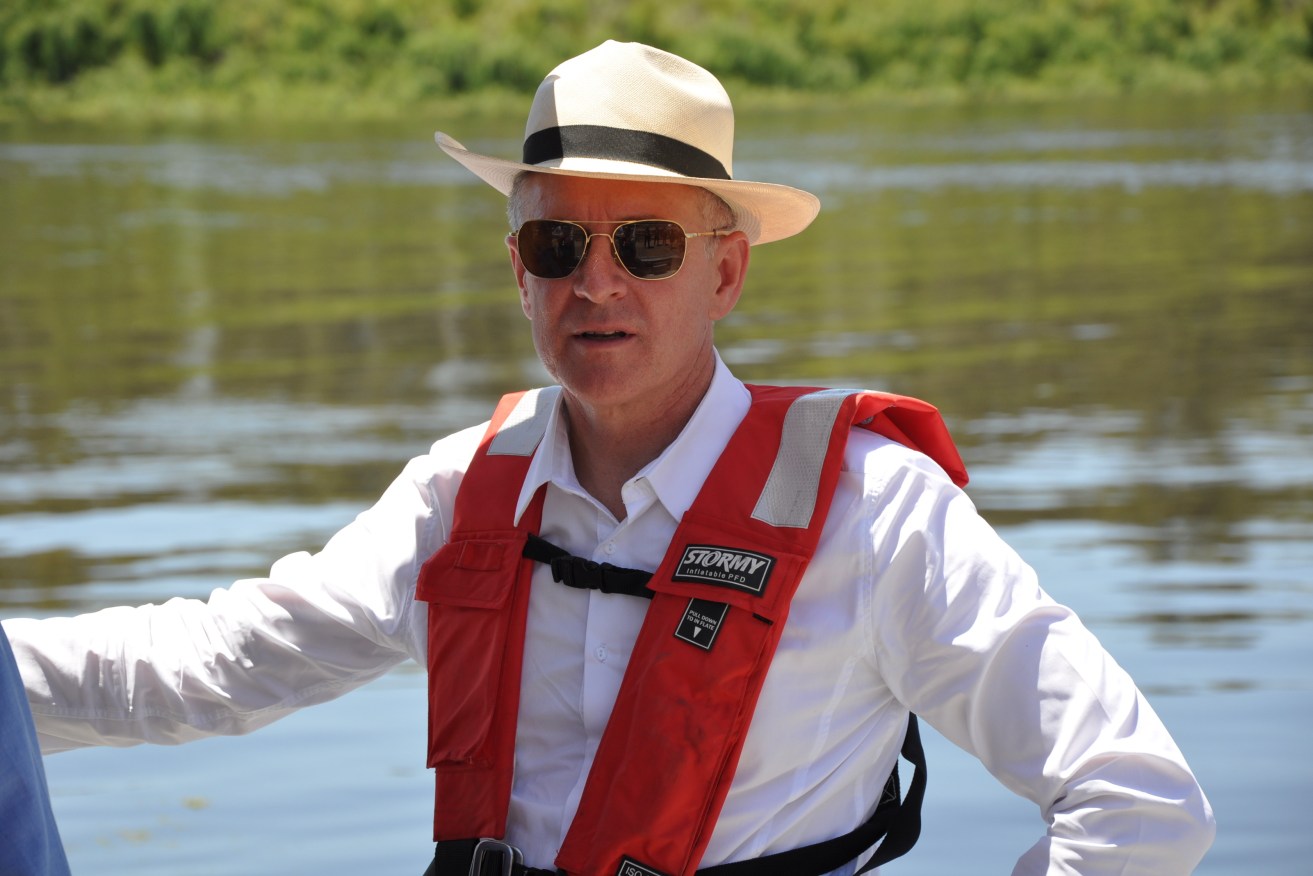Richardson: Labor in uncharted waters, trying to stay afloat
We are now in uncharted territory. The Labor Party today has done something that has not been done since the current electoral boundaries regime was introduced ahead of the 1993 election.

Is Jay Weatherill up the creek without a paddle? Photo: Nick Goodman / AAP
It will inevitably be seen – through a political prism – as a cynical act, a last-chance grab for power, the death knell of a desperate party.
But in truth the ALP has consistently maintained a staunch interpretation of the Constitution Act and the sanctity of the “one vote, one value” principle, and the courts mechanism exists to test disagreements on points of law.
And, after all, it’s arguable that while this is the first time (since the 1970s, under a different Act) the findings of an electoral boundaries review have been contested in the Supreme Court, it shouldn’t be.
It’s more than arguable, indeed, that the Liberals should have exercised their right to appeal on at least two or three occasions in the past few years. They certainly exercised their right to complain!
The rationale that prompted the change that gave us our current, contentious, electoral boundary review regime was that the Olsen Opposition could not gain office in 1989 despite a statewide two-party vote of almost 52 per cent. A subsequent inquiry gave us a Constitution Act that preaches electoral “fairness”, and insists the boundaries be reviewed every four years to ensure that “as far as practicable” a party that achieves “more than 50 per cent of the popular vote” will also hold a parliamentary majority.
But “as far as practicable” has proved an impractical and elusive aim. In the past four elections, the Liberals have won the popular vote three times – and failed to win Government. In 2010, in particular, with 51.6 of the two-party vote, they lost by a mile – with 18 seats to Labor’s 26 (with three independents filling out the 47-seat lower house).
After the subsequent redraw – in which the commission effectively blamed the result on misallocated resources in the Liberal campaign rather than the innate electoral imbalance – there was much huffing and puffing, with former Liberal leader Isobel Redmond even taking the then-electoral commissioner to task under parliamentary privilege.
But there was no Supreme Court challenge.
There is a mythology that has crept in around the SA Liberal Party. A mythology that tells of internal dysfunction, family feuds and abominable electoral fortune.
Since Tom Playford fought his last election, bringing to an end 32 years of continuous rule by his conservative Liberal and Country League, the party has been in power for just 14 of the ensuing 52 years.
They are easily the least successful major party of any Australian state.
The Liberals have won the popular vote in all but one of the past seven elections
But this month’s Electoral Districts Boundaries Commission report could mark a turning point in their wretched fortunes.
For the first time, the redraw acknowledged that providing electoral “fairness” was more important than trying to ensure each electorate contained the same number of voters.
Instead, the commission decided that the 10 per cent discrepancy, either way, allowed under law could be used as a tool to help engineer the long-elusive ‘fairness’ principle.
The ALP disagrees, and the matter will now be sent to the highest authority to determine.
You can’t really blame Labor for trying.
After all, the Liberals have won the popular vote in all but one of the past seven elections – stretching all the way back to 1989.
This point is complicated somewhat by the fact that these elections have frequently been determined by the whim of nominally-conservative independent crossbenchers, whose support the Liberals have had an almost determined fixation to eschew.
Nonetheless, it is plausible to conclude that there are more Liberal voters in SA than Labor ones, albeit with many locked away in safe regional seats.
If the changes that the boundaries commission have put in place are carried – and the Liberals can wrest back the last of their heartland seats from the grasp of the independents – they could be in office for a generation.
So Labor will wear the inevitable political opprobrium of this Supreme Court challenge.
After all, if they let this one go, the end of the Weatherill era could well be marked down in history with the same bewildered disdain as the end of Playford’s reign: the moment the natural party of government became the natural party of opposition.
Tom Richardson is a senior reporter at InDaily.




